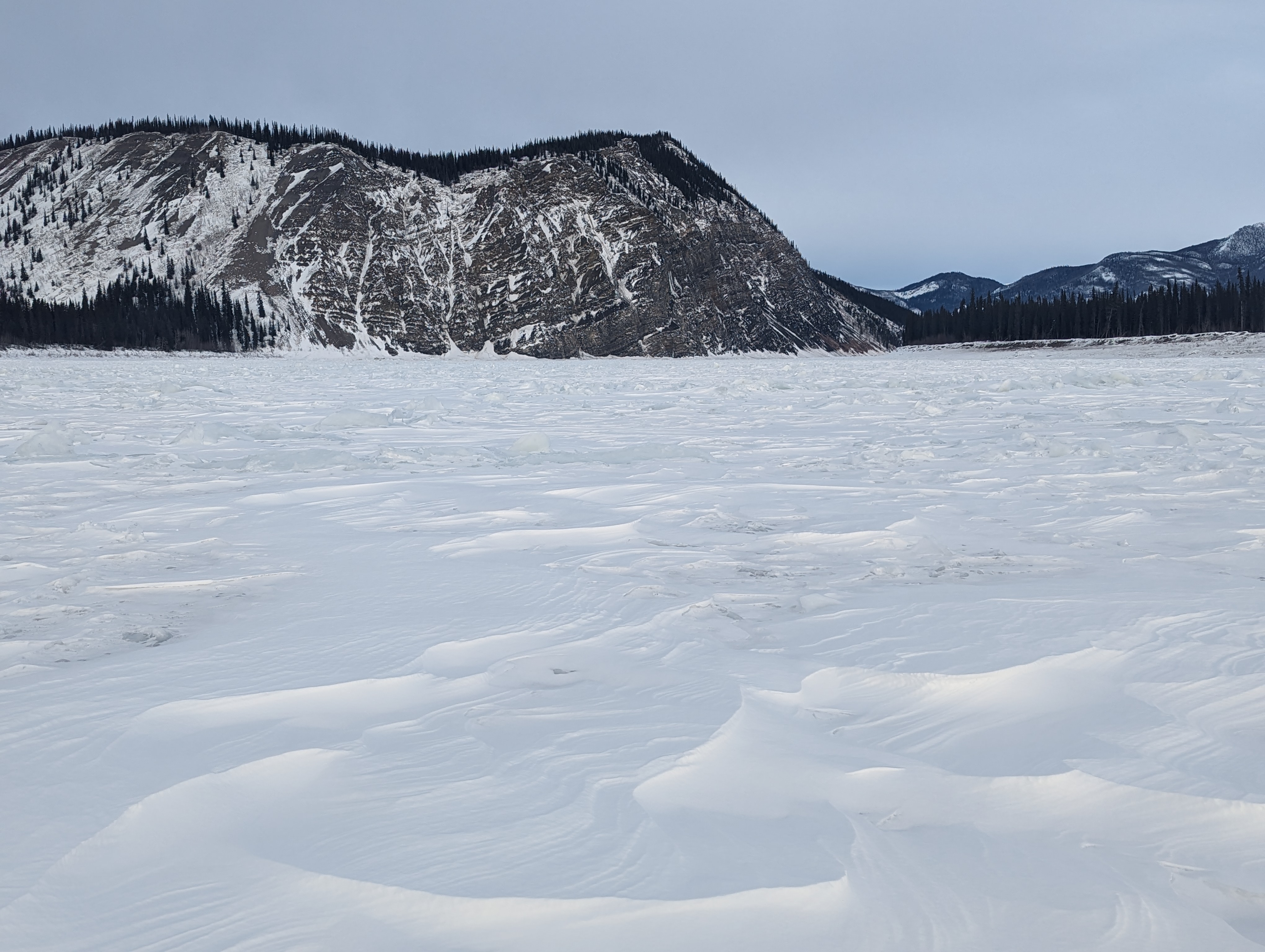Innovating below the ice
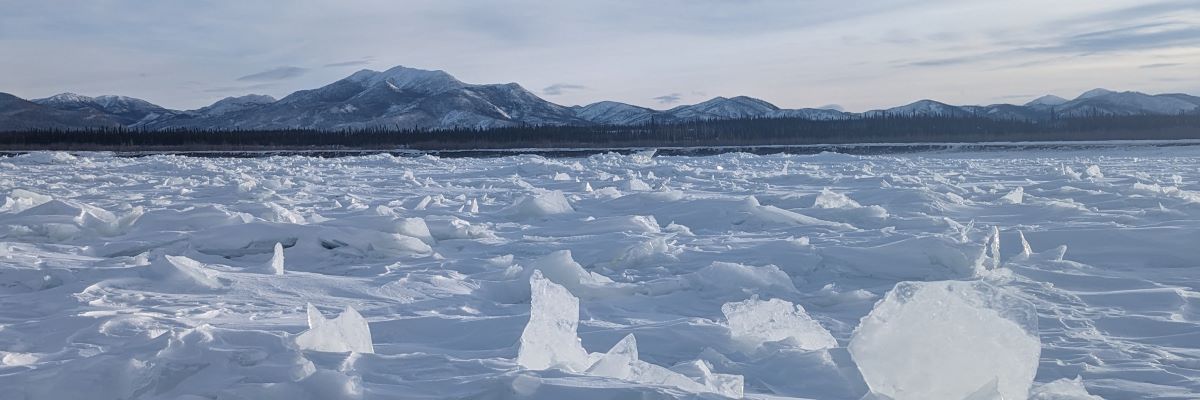
By Savannah Crichton
April 16, 2024
Two researchers from the University of Alaska landed in Eagle, a village in northeast Alaska near the Canada-US border. They unloaded their research instruments and perked their heads up in search of Andy Bassich, who moved there over 40 years ago after falling in love with the land. After a couple minutes, Andy picked them up, snowmachining them 14 miles along the Yukon river to his homestead.
In mid-February, the frozen river they drove by appeared still and foreboding – large chunks of jumble ice jutting out from its surface. But underneath the ice, the water flowed. Stephanie Fisher and Leo Azizi from the Alaska Center for Energy and Power pulled out their equipment: they were there to measure the under-ice flow rate, the first step in determining whether Andy could use this seemingly frozen river to generate electricity.
Through-ice measurements like the ones Stephanie, Leo, and Andy conducted in Eagle, are revolutionary in the river turbine space. The only river turbine that is currently supplying power to a whole community in Alaska is in the Kvichak River at Igiugig, made by Ocean Renewable Power Company. There is a lot of interest around the state for smaller turbines that could power homesteads. Presently, the research focus has been during the open water season, with the idea that these turbines would only run in the summer and be pulled out before freeze-up. If the data from the frozen Yukon indicated that a winter river turbine might work, it would be a ground-breaking – or an ice-breaking – discovery for rural Alaska.
Andy’s home
Andy built his house around an efficiently-designed wood stove, where two fires per day emanate sufficient heat throughout the rooms. He lives right on the Yukon river, with a few small cabins to maintain, 14 sled dogs who enjoy the plentiful trails around his property, and abundant natural resources that help him achieve his goal of living from the land.
“I've built my life to try to live as sustainably as I can using what’s around me–hunting, fishing, gardening, working with nature to live with as little from the outside as possible,” said Andy.
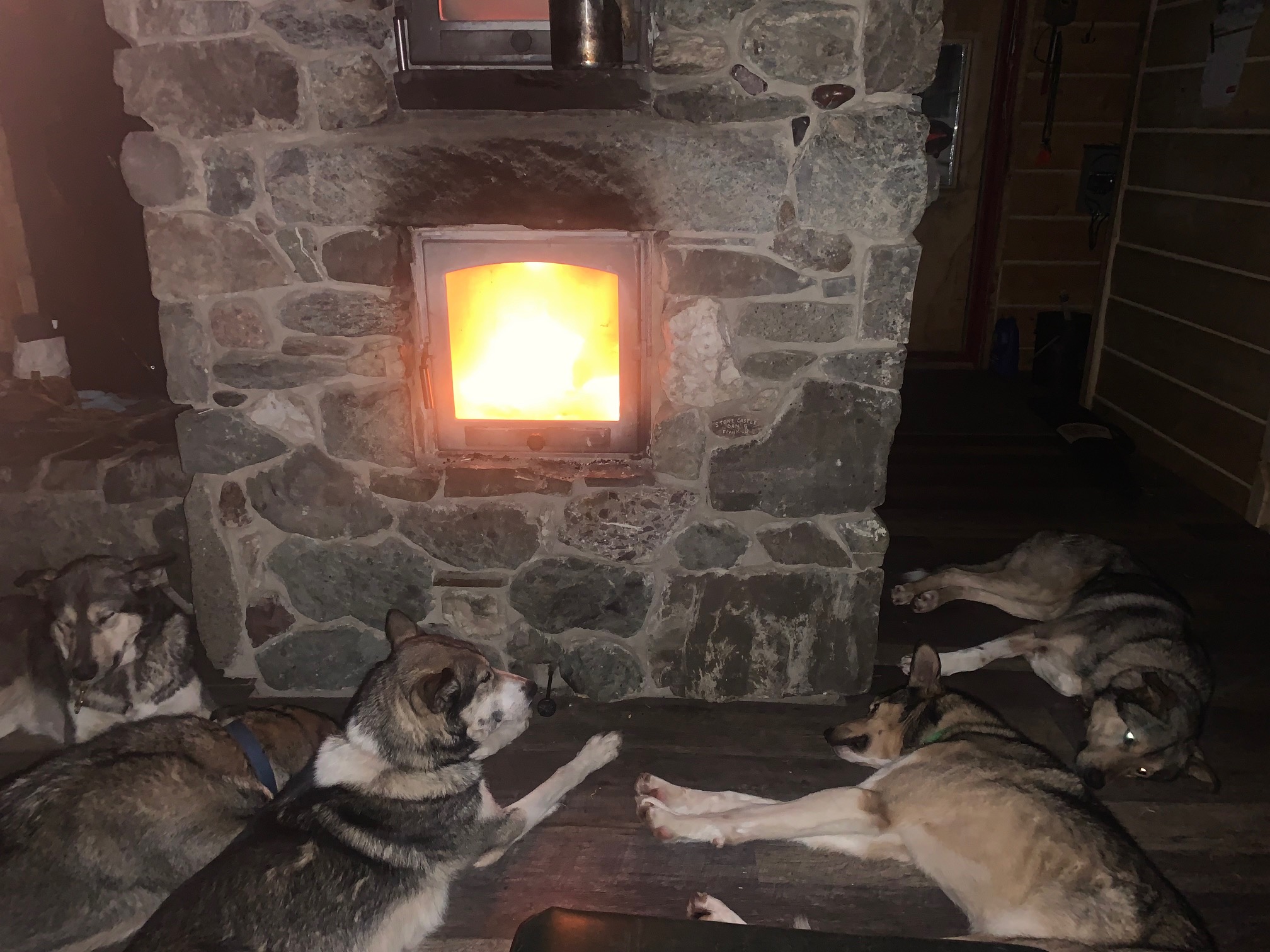
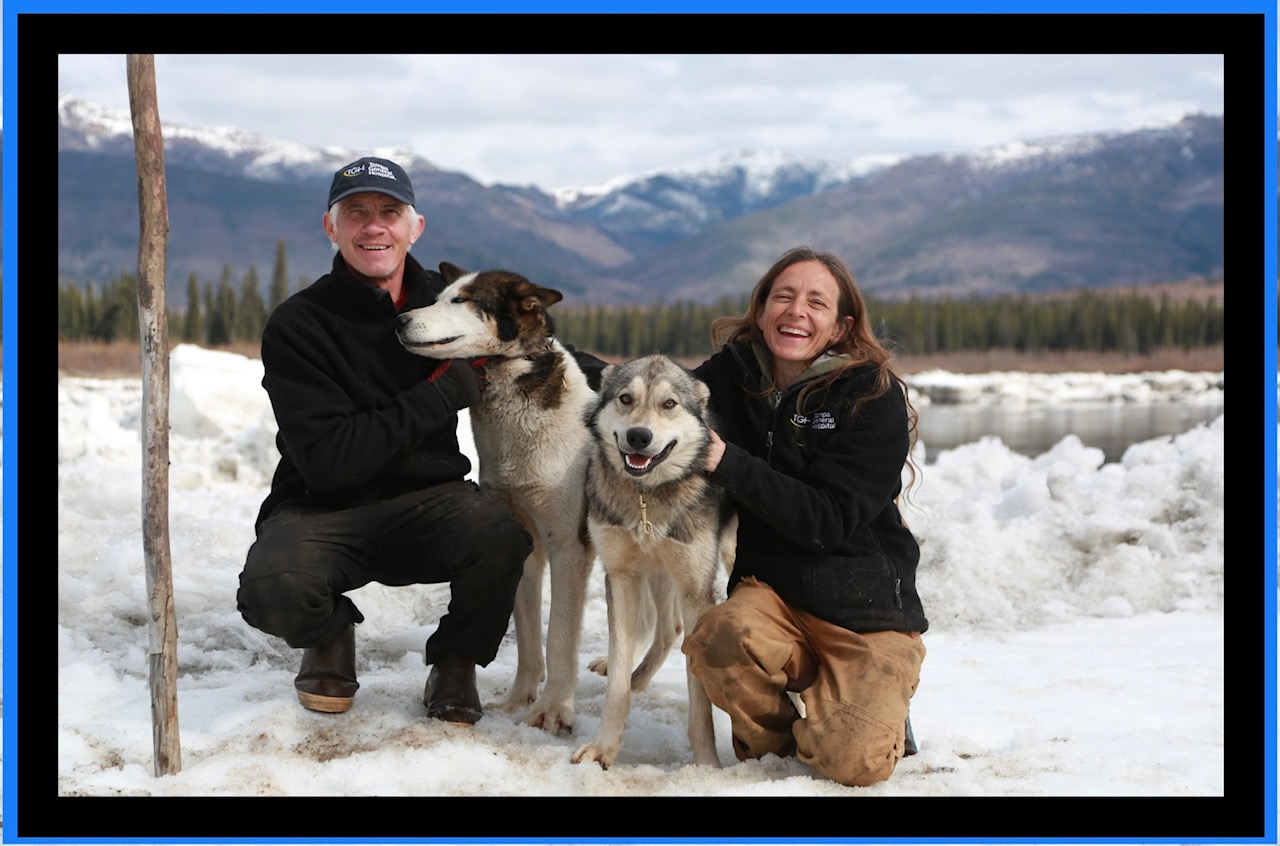
Stephanie Fisher, or Steph for short, has extensive experience in hydrokinetic field work as the manager of the Pacific Marine Energy Center (PMEC) lab, a hub for opportunities in marine energy, including wave, tidal, and riverine. She started at PMEC as a fish tech, and now manages the entire Tanana River Hydrokinetic Test Site.
Leo Azizi, a researcher who works with Steph, handles much of the river turbine mechanics and fabrication work at the lab. Leo has vast experience in Alaska from commercial fishing to aviation work at Ravn Alaska, skills that he now brings to his research.
As they pulled up to the main cabin, Andy gave Steph and Leo a tour of the renewable energy systems around his house–a small solar array, a wind turbine, and a battery bank. In the spring, summer, and fall, the bank quickly gets charged up and powers a high quality of life out in the wilderness.
Steph marveled at the elegant system he uses to power his house and reflected on the effort Andy puts into prioritizing renewable energy generation while living off-grid. “Just talking with him about power and energy, and living out remotely…You hear about it when you do the research, but we got to live it for a weekend,” said Steph.
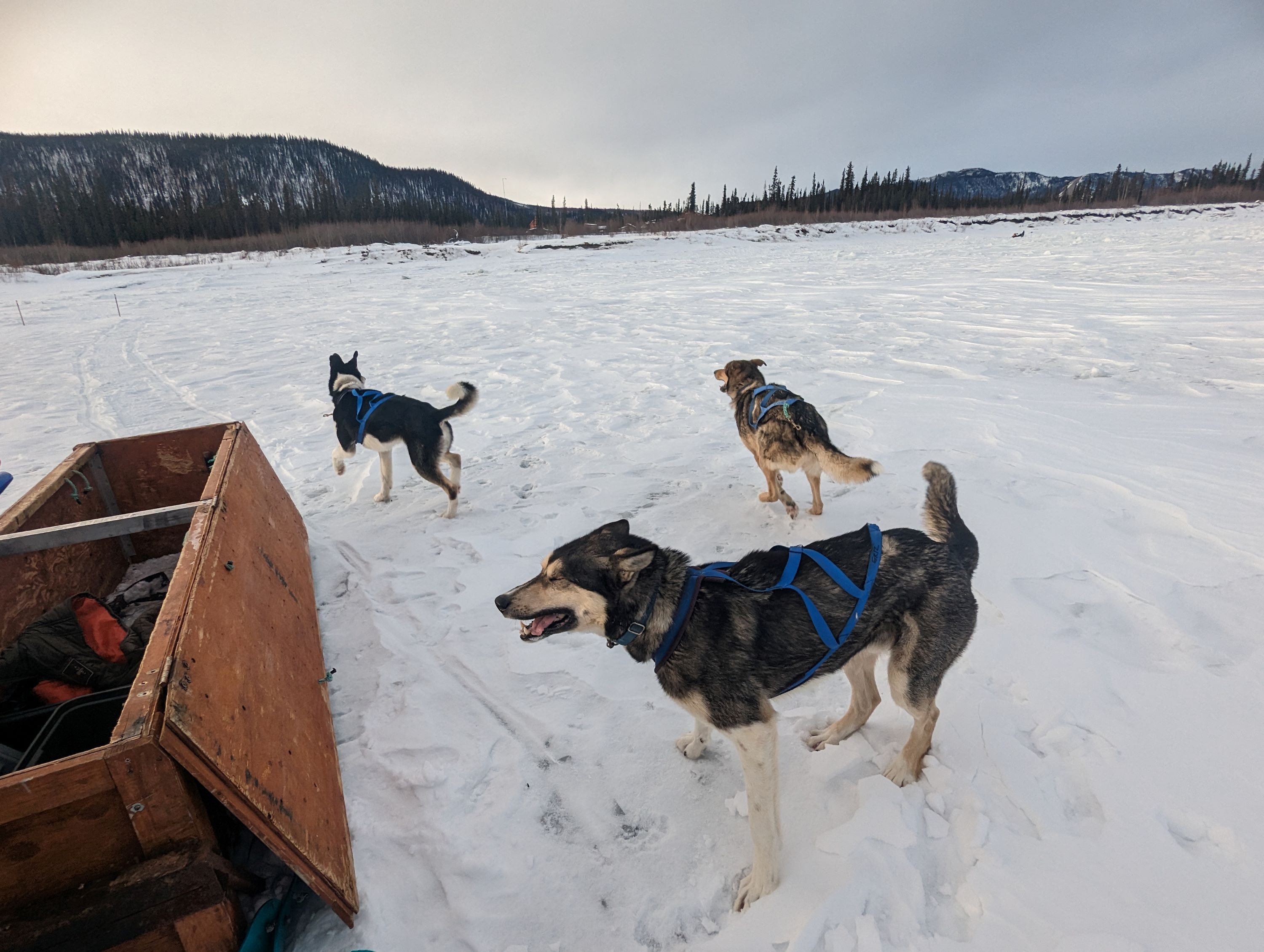
Andy explained that in the dark months, when batteries are drained, sun is scarce, and ‘dirty air’ can’t produce a clean flow to spin the wind turbine, he has no option but to run generators that burn fossil fuels. The one resource that doesn’t stop in the winter is the river. That’s why he decided to approach researchers at the University of Alaska Fairbanks to help him test whether a through-ice river turbine could be a possible source of energy.
Measuring the river
In the dead of winter, the river’s waters are moving the slowest they will all year under three to four feet of ice. Before their trip, the researchers had sent Andy some instruments that collected rudimentary measurements of the river speed. “But the challenge was,” said Steph, “if you want to know how the water is moving through the whole water column, and not just right below the ice, you need fancy equipment.”
They needed to drill and sample from about 15 different locations across the width of the river feasible for running electrical cabling. The measurements end up forming a grid, showing how the water velocity changes as you move away from the riverbank and towards the center.
They prepped for a day in chilly February by bundling up and organizing their instruments. Together, they fashioned a sled to haul sensitive sensors and sturdy ice-fishing equipment, with a shelf to mount a laptop and a generator to power the tools.
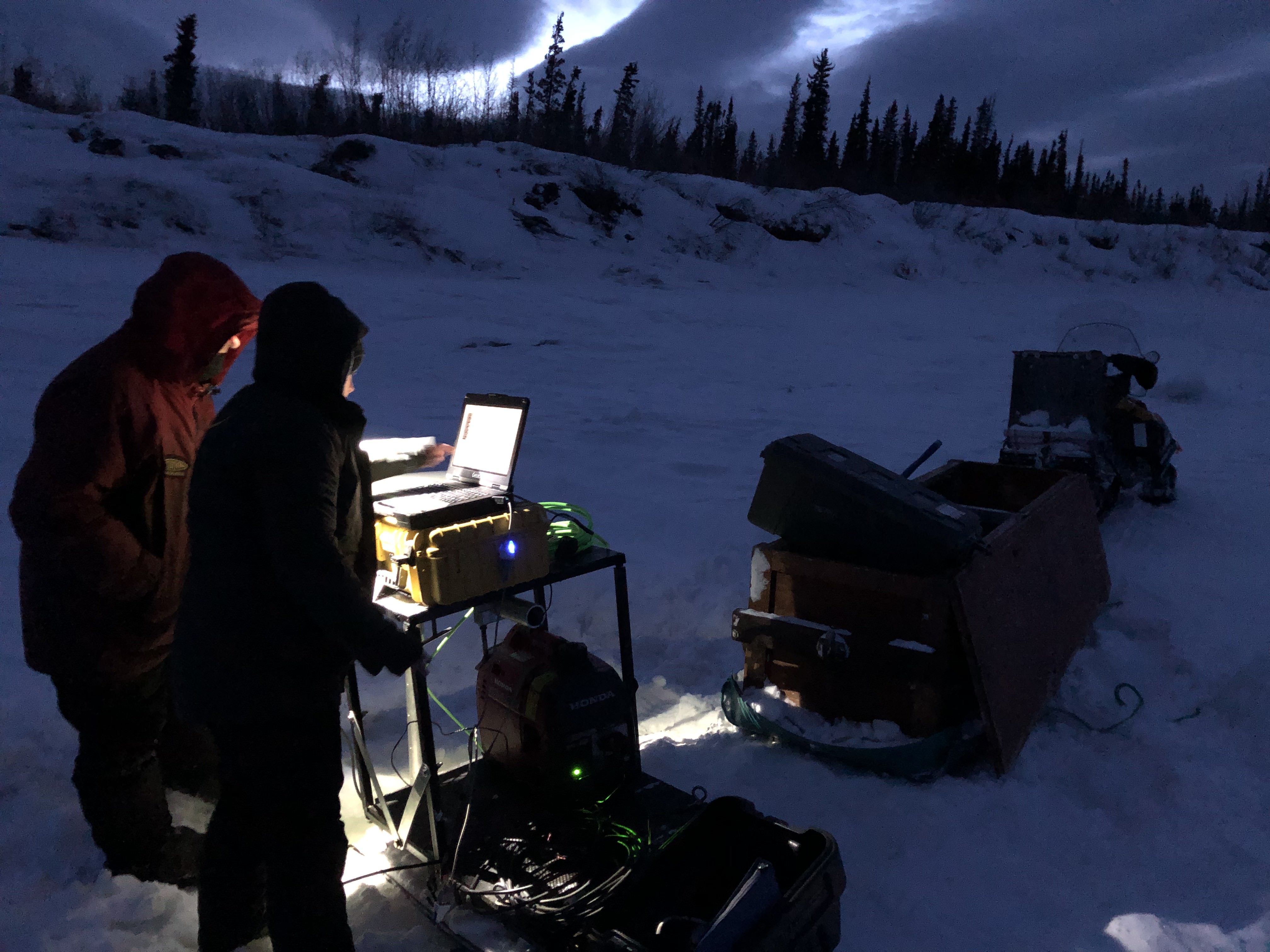
At each site, they drilled through an ice layer with an auger, scooped out slush with a long slotted spoon, and lowered down an acoustic doppler current profiler (ADCP) to measure the water velocity right below the frozen surface. They recorded the exact coordinates of each measurement, as well as water depth, ice thickness, and freeboard–the space between the water and the top of the ice. Then, they pulled the sled about 30 feet to the next drill site.
Andy helped navigate the 3-foot-tall jumble ice, resulting in a speedy field day. Leo recalled Andy’s deep knowledge, saying “We wouldn't have gotten nearly as much work done if he wasn't there. I mean, he was a tremendous help – I thought I was going to be doing all the heavy lifting, and he just made it look really easy.”
“I have a really good understanding of the topography of the river,” Andy said, drawing from his many years working and living on the Yukon. “The fun part was experimenting and trying to find places to optimize those readings that Steph and Leo needed,” he commented.
In the 15 minutes that each measurement took to record, the three chatted about the river and how it changes over time. The water velocity this winter could be different in the coming years due to high water events, snowmelt flushing sediment down the river, and unpredictable breakup conditions.
At the end of the day, they pulled in their sled, placed all the equipment by the wood stove to dry, and backed up the data. Friendly sled dogs and a hot meal warmed the team after a long day on the ice.
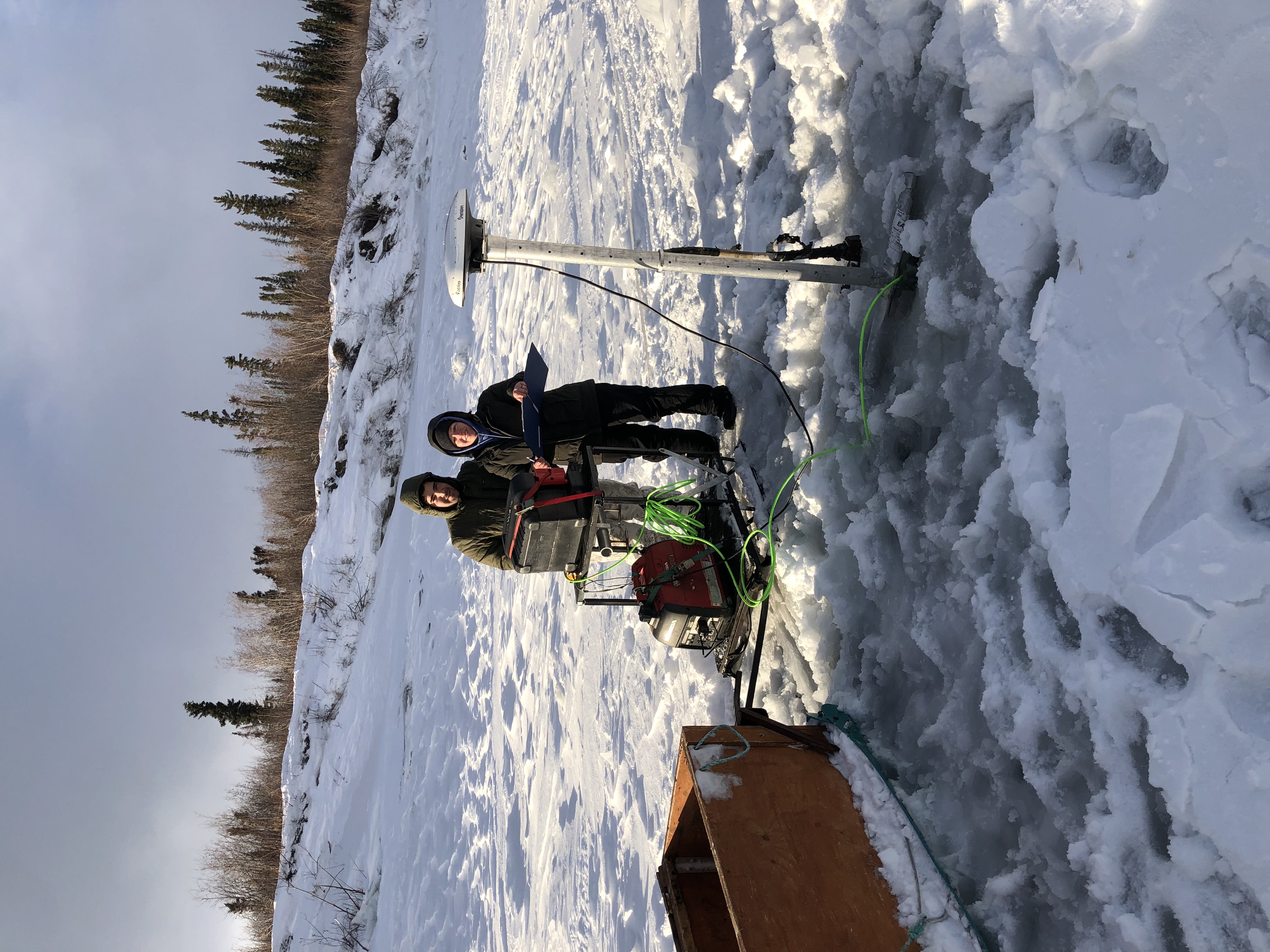
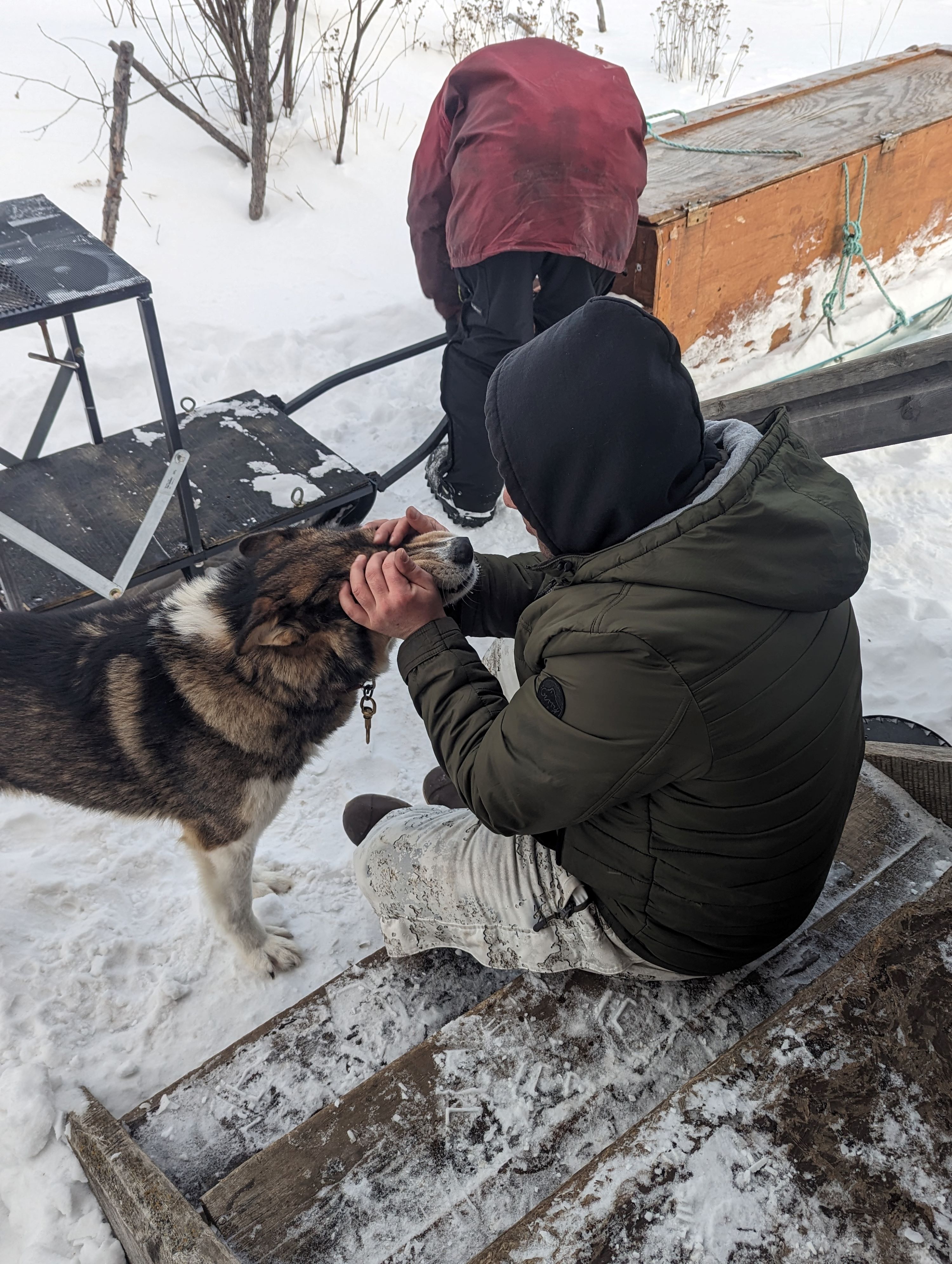
Future steps
Steph hopes that with the data, Andy will be able to mount a river turbine in the location with the highest water movement. Once there’s about a foot of ice on the river, he could go out, cut a hole, and deploy the turbine, taking it out again right before breakup.
One of the challenges, Steph said, is getting the power from the turbine to the homestead. The cost of the necessary heavy gauge wire to run the power to shore needs to be optimized with the highest flow in the river.
A few weeks after Steph and Leo’s visit, Andy received a data report from ACEP indicating better-than-expected water velocity. He remains hopeful that a river turbine is in his future. “I'd love to see him pull it off, because I think he can do it,” said Steph.
Steph and Leo’s field work not only expanded the potential for hydrokinetic power in Alaska’s winters, but also built a lasting relationship with someone living with the realities of variable energy security. Andy enjoyed hosting the research pair for the weekend, calling their work “A nice collaboration of science and what I would call ‘bush knowledge’ of the river.”
Thinking about upcoming field work, Steph noted that she would love to do some through-ice tests at the test site in Nenana. “It’s a lot of data collection, but that’s kind of what everybody needs,” said Steph, “what is the actual resource that we have to work with.”
Andy agrees. For him, the dark months could be electrified with the flow of the river right outside his front door. He thinks that “Proving the concept up here under the ice is going to be a really big eye-opener for a lot of people, and maybe lead to another branch of power production in the North.”
This article is part of the on-going ARCTIC Toolkit series that features stories about the tools, skills and experiences developed by the ARCTIC program. This research was funded by ACEP to advance PMEC capabilities and understanding related to under ice hydrokinetic resources.
